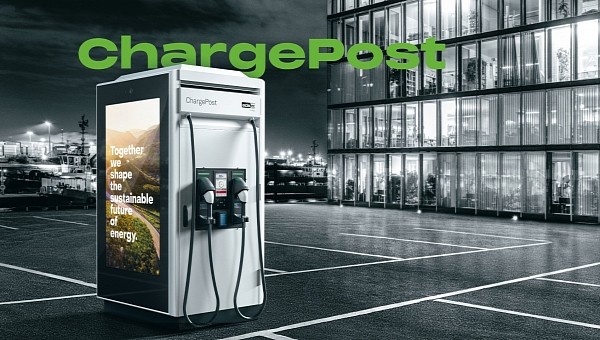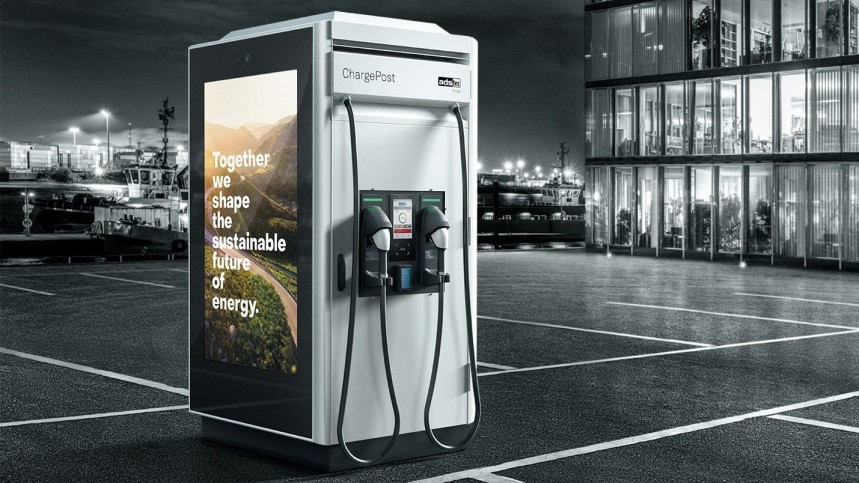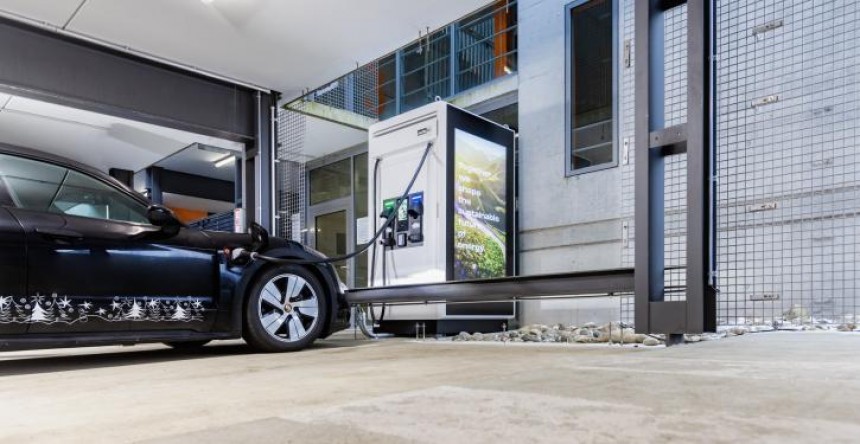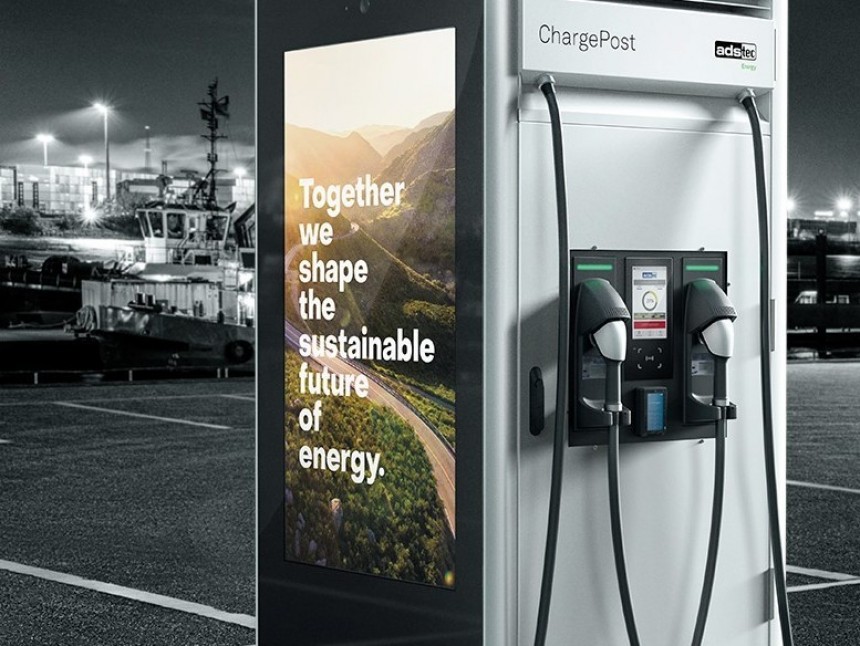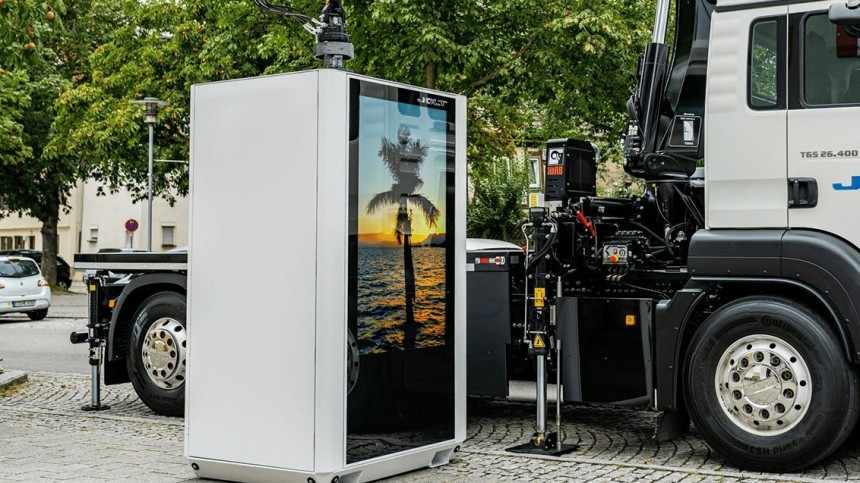Almost every energy analyst fears that the old-style electrical grid is not designed for charging billions of electric cars. So the rumors about blackouts and the EVs' doom are very popular nowadays because almost no one is willing to talk about what it means to upgrade the damn grid. “How about no need to upgrade it at all?” ChargePost creators ask.
Basically, this new fast-charging device is a compact box containing batteries that can fast-charge the batteries of your EV. There’s more to it, but first, let’s clarify the batteries part.
Because I already can see your frowning eyes: "Why in the hell do I need batteries to charge batteries?"
Nowadays, there’s a technological race for EVs with shorter charging times, so the power of charging is increasing at a fast pace. A few years ago, the most powerful fast charger was 50 kW, but now there are superchargers out there with mind-blowing 400 kW maximum charging power.
Can you imagine the leap? In just 15-20 minutes, your EV charges using the amount of electricity needed to power your house for a whole week or more! Now multiply this by hundreds of millions of EVs and you’ll figure out the magnitude of grid challenges.
Large batteries – with a capacity of over 60-70 kWh – need at least 6 hours to fully charge from an AC charging point. And that’s a huge drawback that simply shadows the bright side: an AC charging network is way less expensive than a DC one and much easier to put in place.
Why do we need larger batteries? Because ofmental issues the comfort of mind we're used to: traveling carefree hundreds of miles without wasting time filling up our ICE cars’ tank.
Simply put: larger batteries mean a longer range between one charging and the next. And more charging power means shorter charging times. And that’s just not possible using an AC charging point. It’s simple physics: you can’t fill up a pool in 10 minutes using a straw. Unless…
There is a catch, though: you need a 3-phase AC grid, with an input power of at least 22 kW, an input current from 32A up, and an input voltage of 400V (you have all the technical details in the PDF file attached below). This is uncommon for a regular household, but it’s widespread for many buildings and sites in cities.
The energy coming from the AC grid is stored in the internal batteries, which have a configurable 144 or 201 kWh capacity - this second variant is like using two Mercedes EQS to store the energy. So, it’s plenty of electrons to use.
The fast-charging box is equipped with two DC charging points. When both of them are used, each one can ultra-fast charge an EV with 150 kW DC power, while using only one of them allows a 300 kW DC power - quick, name an EV capable of such super-ultra-mega fast charging!
There you are: ChargePost is feeding from an AC grid, has a battery storage system, and offers DC ultra-fast charging. I bet those naysayers are now “thunderstruck”, huh?
Two EVs like this would deplete this fast charger's integrated batteries for the rest of the day. Once again, it’s physics: feeding electricity from the AC grid simply takes more time than discharging batteries by fast-charging EVs.
How about, instead of fully charging your battery, you only stop for a 5-minute rapid charge? This way, the battery of an EQS is charging around 10 kWh, enough for 40 miles (or around 65 km). Which is more than your usual daily city commute, surveys say.
In the case of a more down-to-earth EV, like the entry-level Ford Mustang Mach-E 68 kWh, 5 minutes of 150 kW DC fast charging allows you to travel more than 25 miles (or around 45 km). Value matching those in the surveys.
This use case scenario allows the internal battery to rapid-charge at least 20 electric EQSes or 30 Mustang Mach-Es until depleting. And that's for the worst-case scenario. As the AC grid is continuously feeding the internal battery, it could fast-charge more than 100 EQSs in 24 hours.
Now that’s a more appropriate business scenario: “it offers maximum flexibility for spontaneous and rapid charging of several vehicles in succession”. But wait, there’s more.
That’s why you can optionally fit its walls with up to two 75” advertising eye-catching 4K displays. They are guaranteed for at least 50,000 operating hours with high brightness. It’s not a new idea, but it’s one of the best we’ve seen in years.
How about photovoltaics? In the first half of 2023, a new feature will be available: the possibility of feeding stored energy bidirectional back into the grid, in conjunction with a solar panels system.
Let’s not forget the “second life” concept: battery modules can be replaced individually, allowing for the use inside ChargePost of EV battery modules that are no longer appropriate for cars. This way the carbon footprint of batteries lowers thanks to a longer use before the end of life.
It’s aimed at companies’ fleets where there is a stringent need to replace fossil-fueled cars with electric cars, but this adds logistics problems, like where to efficiently charge those EVs, how much it costs to extend the existing grid, and so on.
Well, worry no more, as ChargePost requires simple and quick installation and connection to the existing power grid. Of course, “simple” is not quite that simple, because you need some paperwork and professional teams.
But we’re not worried about German ADS-TEC Energy’s future plans. Their idea is aimed at many clients, ranging from fleet operators and transport logistics companies to car dealerships and supermarket chains, or even gas stations.
It’s also an interesting proposition for office and commercial buildings as ChargePost could conveniently become an alternative to setting up a network of AC wall chargers. Local authorities should take this into account when planning how to spend those subsidies for millions of charging points.
At this point, let me suggest to all EVs negationists out there some AC/DC hits, like “Are You Ready,” “High Voltage,” or “Hells Bells”. Not necessarily in that order.
Because I already can see your frowning eyes: "Why in the hell do I need batteries to charge batteries?"
DC is a headache for the grid
Fast charging points require a powerful grid infrastructure capable of transporting DC (direct current). This is very costly and requires big upgrades to electrical infrastructure. That’s why all those naysayers are warning us that EVs are going to doom the grid (implying that we should stay with petrol cars, huh?).Nowadays, there’s a technological race for EVs with shorter charging times, so the power of charging is increasing at a fast pace. A few years ago, the most powerful fast charger was 50 kW, but now there are superchargers out there with mind-blowing 400 kW maximum charging power.
Can you imagine the leap? In just 15-20 minutes, your EV charges using the amount of electricity needed to power your house for a whole week or more! Now multiply this by hundreds of millions of EVs and you’ll figure out the magnitude of grid challenges.
AC is not enough for big batteries
On the other hand, the grid in cities is mainly AC-based. But alternative current charging points operate with much lower levels of power, so charging times are much longer. Especially for EVs fitted with higher-capacity batteries.Large batteries – with a capacity of over 60-70 kWh – need at least 6 hours to fully charge from an AC charging point. And that’s a huge drawback that simply shadows the bright side: an AC charging network is way less expensive than a DC one and much easier to put in place.
Why do we need larger batteries? Because of
Simply put: larger batteries mean a longer range between one charging and the next. And more charging power means shorter charging times. And that’s just not possible using an AC charging point. It’s simple physics: you can’t fill up a pool in 10 minutes using a straw. Unless…
They expect this to rock fast charging like AC/DC’s “T.N.T”
ADS-TEC Energy claims that AC/DC dilemmas are solved. There’s no need for a DC infrastructure because the ChargePost box can easily be connected to the existing AC infrastructure and still provide DC fast charging.There is a catch, though: you need a 3-phase AC grid, with an input power of at least 22 kW, an input current from 32A up, and an input voltage of 400V (you have all the technical details in the PDF file attached below). This is uncommon for a regular household, but it’s widespread for many buildings and sites in cities.
The energy coming from the AC grid is stored in the internal batteries, which have a configurable 144 or 201 kWh capacity - this second variant is like using two Mercedes EQS to store the energy. So, it’s plenty of electrons to use.
There you are: ChargePost is feeding from an AC grid, has a battery storage system, and offers DC ultra-fast charging. I bet those naysayers are now “thunderstruck”, huh?
A question arises: is it a feasible idea?
To be fair, if you want to fully charge your EV’s big battery, this device doesn’t seem like a good business case. Take the EQS, for instance: the 108 kWh battery needs roughly half an hour for 0-80% when charging at 200 kW DC.Two EVs like this would deplete this fast charger's integrated batteries for the rest of the day. Once again, it’s physics: feeding electricity from the AC grid simply takes more time than discharging batteries by fast-charging EVs.
How about, instead of fully charging your battery, you only stop for a 5-minute rapid charge? This way, the battery of an EQS is charging around 10 kWh, enough for 40 miles (or around 65 km). Which is more than your usual daily city commute, surveys say.
In the case of a more down-to-earth EV, like the entry-level Ford Mustang Mach-E 68 kWh, 5 minutes of 150 kW DC fast charging allows you to travel more than 25 miles (or around 45 km). Value matching those in the surveys.
Now that’s a more appropriate business scenario: “it offers maximum flexibility for spontaneous and rapid charging of several vehicles in succession”. But wait, there’s more.
More than a fast-charging station
This fast-charging station has a convenient footprint of 21.5 square feet (less than two square meters). It’s suitable for parking lots, where it surely will draw attention thanks to its height of 7.8 feet / 2.4 meters.That’s why you can optionally fit its walls with up to two 75” advertising eye-catching 4K displays. They are guaranteed for at least 50,000 operating hours with high brightness. It’s not a new idea, but it’s one of the best we’ve seen in years.
Let’s not forget the “second life” concept: battery modules can be replaced individually, allowing for the use inside ChargePost of EV battery modules that are no longer appropriate for cars. This way the carbon footprint of batteries lowers thanks to a longer use before the end of life.
Shut up and take my money!
This battery-stored all-in-one charging solution is immediately available in Germany and Europe and will be available in the U.S. soon. But keep in mind that it’s not a device for personal use. It’s a business proposition.It’s aimed at companies’ fleets where there is a stringent need to replace fossil-fueled cars with electric cars, but this adds logistics problems, like where to efficiently charge those EVs, how much it costs to extend the existing grid, and so on.
Well, worry no more, as ChargePost requires simple and quick installation and connection to the existing power grid. Of course, “simple” is not quite that simple, because you need some paperwork and professional teams.
But we’re not worried about German ADS-TEC Energy’s future plans. Their idea is aimed at many clients, ranging from fleet operators and transport logistics companies to car dealerships and supermarket chains, or even gas stations.
At this point, let me suggest to all EVs negationists out there some AC/DC hits, like “Are You Ready,” “High Voltage,” or “Hells Bells”. Not necessarily in that order.
